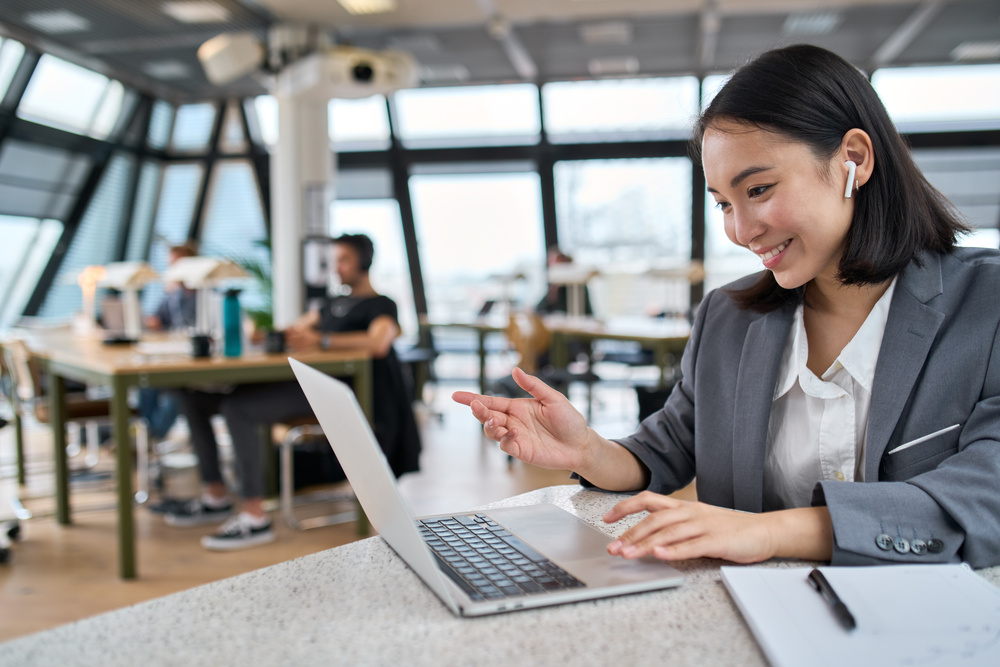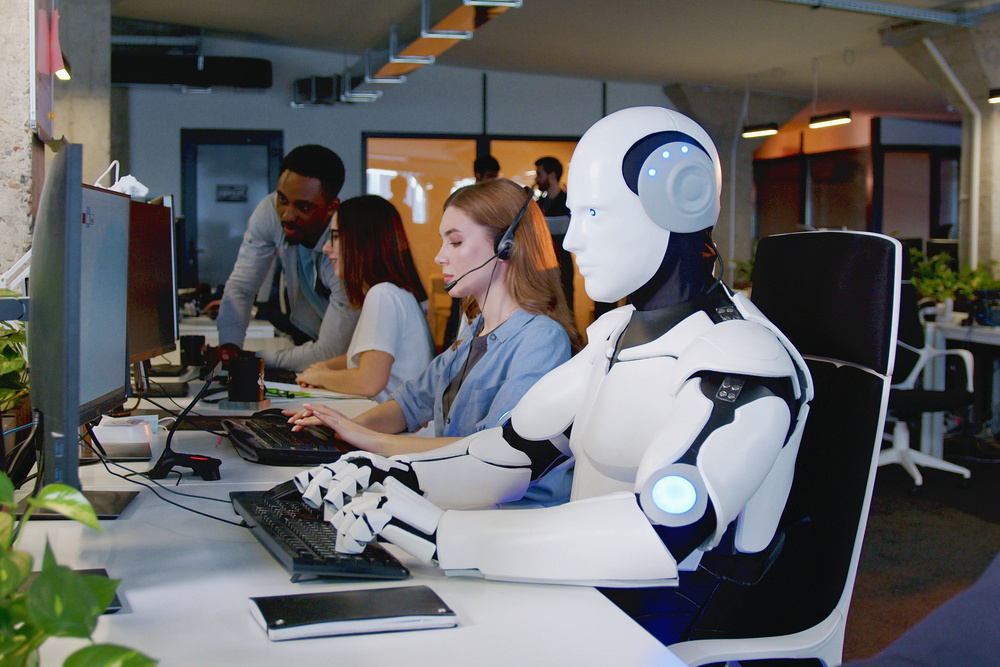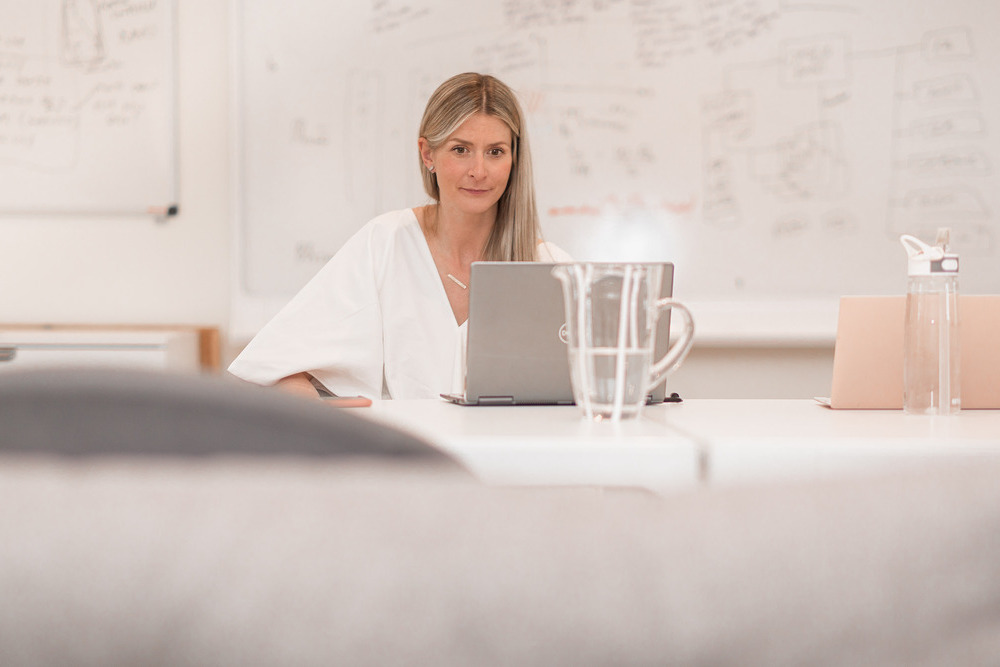As employers navigate the brave new world of hybrid working, the design and physical environment of the office so it enhances wellbeing and connection is under the spotlight more than it’s ever been.
“The pandemic has really made us question what the purpose of the office was and is,” says Susannah Burock, VP global workplace experience, corporate real estate and services, Swiss Re, who also has a master’s in health and wellbeing in the workplace.
Do we really need big luxury offices anymore?
“I mean, do we need these big luxurious offices in Canary Wharf? Or did we learn something from the pandemic about how people liked being in their communities, enjoying nature in their breaks and could also be there to put on the laundry and feed their children at lunchtime? We need to think about the purpose and whether, for example, we need to be doing emails in the office. I don’t think we do.”
With many employees echoing Burock’s view the pressure is on offices – particularly in light of their huge expense in terms of rent and utility bills, not to mention the effect on the planet and commuting requirements – to prove and deliver their worth.
As Burock says, the obvious modern day purpose of many offices now is to foster connection. It’s well documented that, while many employees may like the flexibility of working from home, there are real risks to their mental health of feeling disconnected, such as loneliness, which we’ve written about here.
The need for social connection
“What people really missed is social, human connection,” said Burock. “Spaces where you can share information so it’s a little bit less about ‘me’ and it’s more about the collective ‘us’.”
Rohan Kallicharan, director of people and talent, Carbon Clean, agrees it’s about “reframing the narrative” around offices and what they are for. His company is following a hybrid working model where employees are required to be physically in the office twice a week with one stipulated day when they work in their team group and the other day they choose based on their personal circumstances. To implement this, employees use hot desking.
“But if you’re coming in to sit at a desk all day, I’d question whether you should be there that day because, actually, those are the days when you want to see people being productive in meetings, catching up with people and collaborating,” says Kallicharan. “We’re absolutely clear that what we want to do when we’re in the office space is use that time to be around people.”
You’re not going to please every office worker all of the time
Carbon Clean is experiencing rapid growth and Kallicharan is tasked with scaling its culture in a way where all its people can thrive not just professionally but also personally. Creating the right office environment, particularly as the company welcomes employees back, is crucial. The biggest learning he’s had so far that he’s keen to stress to others thinking about office design is to understand that “you’re not going to be able to please everyone all of the time, don’t try and do it”.
So, while you might be tempted to cover the walls in a beige or magnolia paint because these colours are associated with calm and are often seen as ‘least offensive’, this could miss the potential of a physical space to encourage specific moods. Also, in seeking not to offend anyone you could also end up not particularly appealing to anyone, especially if you have a diverse workforce.
To get around this conundrum Carbon Clean has opted for creating very different spaces in terms of function and décor in the hope that everyone will find a space that feels more like home.
Different spaces for different purposes
“Different areas are going to suit different people at different times of the day depending on what they want to do,” he says. “We’ve got specific meeting rooms, we’ve got breakout spaces, spaces with food and coffee and then more traditional type of hot desking area. These different environments have got different colour schemes ranging from neutral to outrageous.”
Another piece of good advice he’s acquired is to remember that we are all learning new ways to behave in the office and creating an environment that works is going to take tweaks and time. “Don’t expect to get it right all the time or first time,” says Kallicharan.
For example, a new office etiquette some organisations are currently grappling with is what to do about taking calls, either phone calls or video calls. In the days when the office was always full and buzzing with people, a call might blend in but, now, in a quieter office it can prove very distracting for some employees.
Leaders role modelling new behaviour is key
For others, like young grads wanting to learn, being privy to these kinds of conversations and role modelling could enhance their learning, especially if they’ve been working in isolation throughout the pandemic. This brings up the question of whether new guidelines, or role modelling, are needed to influence environmental culture around, for example, the use of private or breakout rooms.
The biggest challenges facing employers when it comes to environmental wellbeing in a hybrid working space is how you create a sense of belonging with a more transient, flexibly working workforce.
Chevy Rough, health and wellbeing lead, PGL, speaks for many employees when he outlines the challenge and describes how he feels adjusting to today’s status quo:
The struggle to find your own space in a hotdesked world
“One of the things I’m struggling with going back to the office part time is not having my own space,” he says. “I’m a creature of habit. I know if my wife has been in my office and moved something a centimetre because I set up the right environment to cue the right behaviour. So I go into the office and I’m sitting at another desk and it’s not set up and I’m not comfortable.”
The ‘old’ ways of fostering belonging – pictures of family stuck to desks, your lucky charm, drawers full of your own stuff, the chair set perfectly to your height – don’t seem viable in the new officescape. So in what new ways can employers create a strong sense that an employee does belong, even if they don’t have a specific space to call their own?
Again, Kallicharan believes it comes down to reframing the narrative, building on what Burock says about shifting the focus from ‘I’ to ‘us’.
“Chevy’s right. Ultimately we all want a sense of belonging. But now it’s a collective belonging more than an individual belonging. Employers need to create spaces where teams can get together and have fun, creating communal shared spaces rather than individual personal ones. That’s the secret to driving that culture of collaboration where people feel they belong and actually want to come in to, because they’re enjoying being there, around the people they’re working with, regardless of what colour the walls are, furniture textures are used or angle the light hits their desk.”












